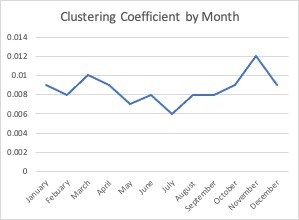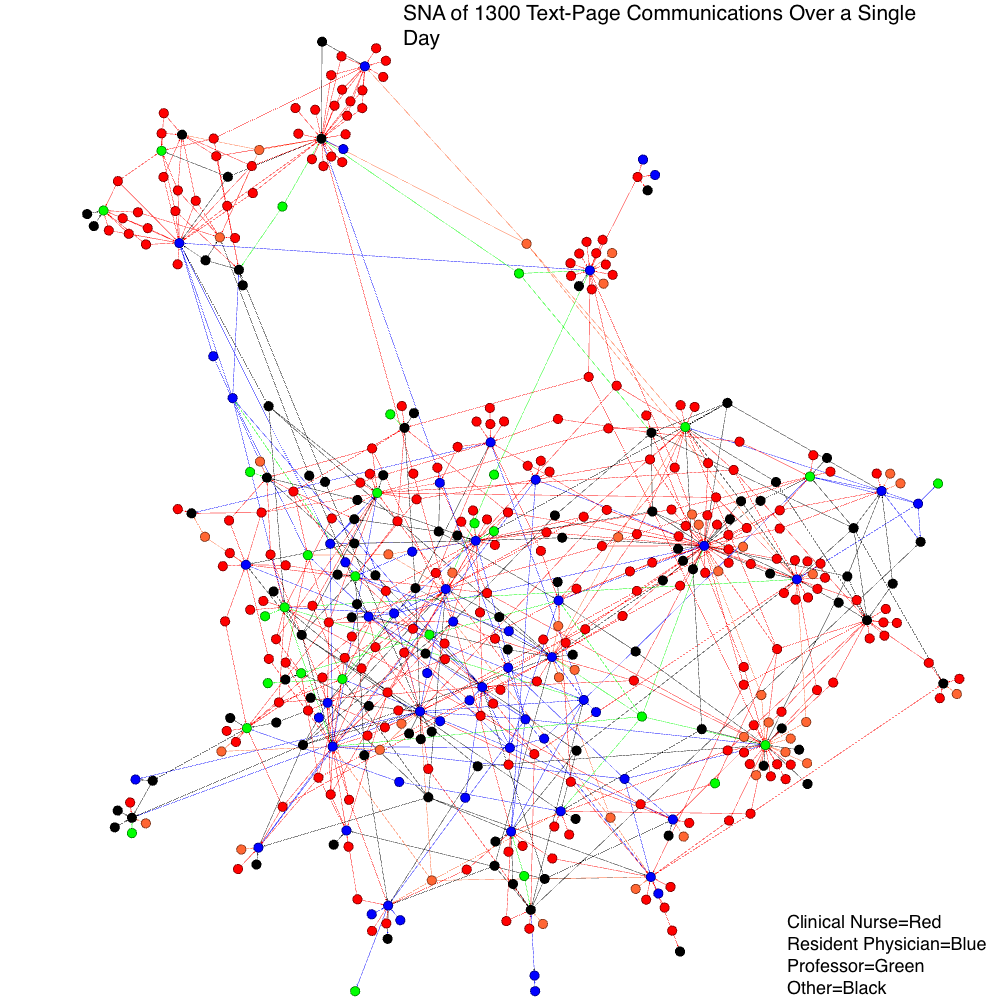Background: Electronic messages represent a growing proportion of inter-professional team communication in the inpatient setting. Poor communication hinders team collaboration, increases patient readmissions, and may facilitate burnout. Descriptions of inter-provider communications have largely utilized survey data in specialized settings at a single time-point. We sought to characterize in-patient hospital-wide inter-provider communication patterns over a year.
Methods: We analyzed messages sent in CareWeb, a secure text communication platform integrated with the hospital paging system at our urban inpatient tertiary-care academic center, from January 2018 to December 2018. After labeling each sender and recipient with their clinical role, we used a network graphing tool to visualize the communication network by month and hour of day. We analyzed communication patterns of individual users and quantified how the connectivity of the network changed over time.
Results: Between January 2018 and December 2018, 460,364 messages were sent between 5329 unique providers (professors, residents, nurses and other staff). Clinical nurses sent the majority of text-pages (mean = 181 messages per nurse per year) with the top ten users sending an average of 1015 messages. Resident physicians received the majority of text-pages (mean = 278 per physician per year) with the top ten resident physicians receiving an average of 3,154 messages. More messages were sent from 10 AM – 12 PM (mean = 263/hr) as compared to night time 12 AM – 2 AM (mean = 55/hr) The clustering coefficient, a surrogate measure for team cohesion, was greatest in November (0.012) and during midday (0.035) and lowest in July (0.006) and at night (0.005).
Conclusions: Communication patterns showed seasonal and hourly variations in whole-network and team communication. Most notably a marker of team cohesion decreased in July when new interns begin working in the hospital, and increased at midday, presumably after rounds. Further work will elucidate whether measures of team cohesion correlate with clinical outcomes and provider burnout.


